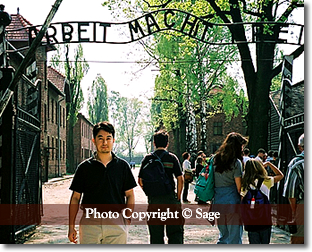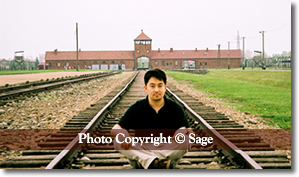 |
|
| Auschwitz It was just an hour's drive from Krakow to Oświęcim. Upon entering Oświęcim and seeing the sign, "Auschwitz," I trembled in every limb for something I could not hardly ever describe saying to myself, "I've finally got here, finally..." Auschwitz, a symbol of genocide and the Holocaust, was established by the Nazis in 1940 and was occupied by the Germans during the Second World War. I first saw that slogan at the entrance, "ARBEIT MACHT FREI" (work makes you free) which I had seen on TV, film, and in the books. |
|
 |
|
| Inside
was quieter and cleaner than I initially had expected and was ironically well-ordered
in a way. There were electric fencing and a number of buildings, and each building
was categorized by countries that had been affected by the Nazis. Inside I found
prisoners' clothes, beds, a number of pictures and documents, and I totally got
struck with horror. I saw a few old people in tears. |
 |
 |
This is where the camp Gestapo was located. Prisoners suspected of involvement in the camp's underground resistance movement or of preparing to escape were interrogated here. Many prisoners died as a result of being beaten or tortured. |
| Birkenau ( Auschwitz II ) And not very far from this site, there was another concentration camp called Birkenau. And no sooner had I seen the guard tower and rail line which I had definitely seen on the film, Schindler's List, I got struck again with a sigh. I plodded on the rail line until it ended and found monuments with various languages. I stayed there awhile. |

|
| More than 2 million Jews were killed in gas chambers. When the Russian army was approaching near this area, the Germans destroyed these gas chambers using dynamite to hide the evidence of what they had been doing. |
 |